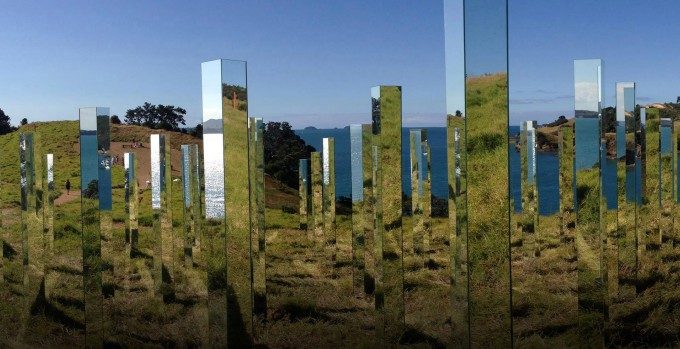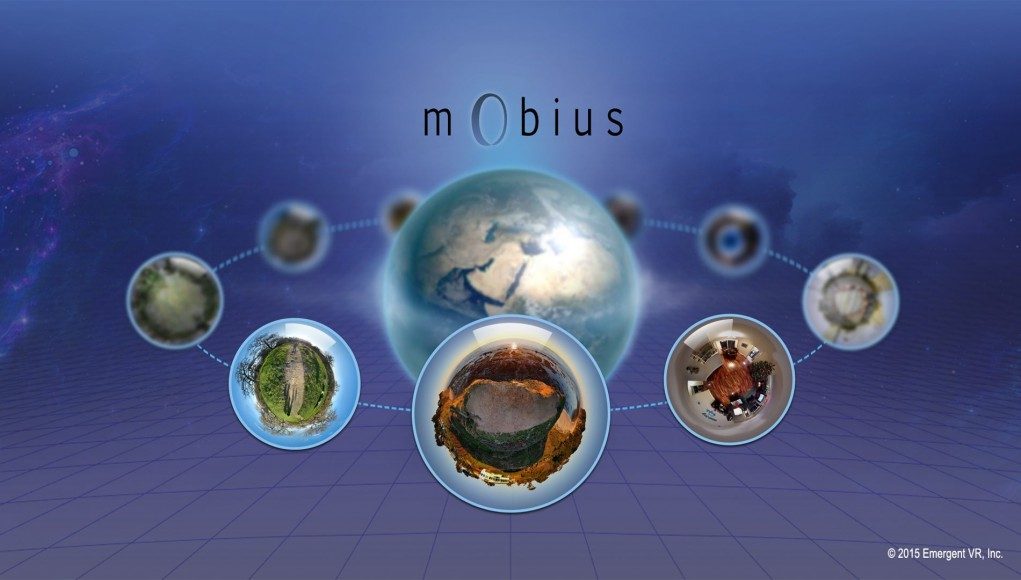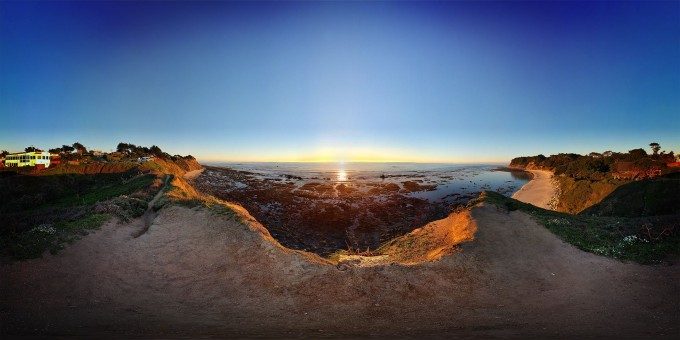Emergent is creating ‘Mobius’, an app and platform enabling users to capture and share VR experiences using existing smartphones. From a user standpoint, Mobius seems like a fairly typical 360 degree stitching app, like Photosynth or Photo Sphere (part of Google Camera), which can output the scene in a VR-ready view. But the company has a fairly awesome twist up their sleeve: seamless video integration into still photo spheres.
Emergent VR recently announced it was to receive $2.2M of funding from Accel Partners, Google Ventures, and Rothenberg Ventures to “build the first mobile platform for capturing and sharing moments using virtual reality.” The platform, codenamed Mobius, will allow anyone to capture a live action VR experience and share it on social networks using an iPhone or Android smartphone.
We’ve seen plenty of special VR video rigs that capture the scene in all directions using many synchronized cameras; but with only a single camera on the everyday smartphone, how could video be part of the equation? Mobius‘ answer is to smartly integrate recorded video in one section of the sphere, while the rest manifests as still photos. The company has developed a system that smoothly stitches the video segment into the photo sphere.
The result, which was shot on a widely available smartphone with video recorded in 720p, not only looked surprisingly good, but was also surprisingly immersive. What I saw when donning a Gear VR headset was a high quality 360 degree photo scene of a beach at sunset. Directly in front of me, right where the sun was setting over the ocean horizon, I could see waves lapping and glinting in the sunlight. Elsewhere around me was the rest of the scene, frozen still, but a convincing extension of the video segment.
With just a relatively small segment of the sphere containing video, you might think the scene would lack immersion, but I found just the opposite. The solution is not only a smart way to take advantage of existing smartphone hardware and a massive existing install-base, it also retains the concept of the ‘frame’, making it easy for anyone to shoot the action, as they’re used to, but be able to extend that action with the greater context of the scene by snapping it in a series of stills.
Founders Peter Wilkins and Chris Wheeler worked previously with VR Film studio Condition One to create a 3D 360 degree video rig and pipeline, and before that both worked at Dreamworks Animation with credits on Kung Fu Panda (2008) and How to Train Your Dragon (2010) among others.

While the demos I saw had video segments that were static, the founders told me that Mobius will be able to correctly handle video segments that move about the rest of the scene. That’s something I’ll need to see to know whether or not it will enhance or break immersion.
Another thing I’m looking forward to seeing from Emergent is how the capture process actually works. While the demo captures were impressive, it will be key for the capture process to be quick and painless if the company hopes to turn Mobius into the “Instagram of VR,” as they say is there goal.









